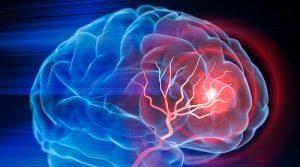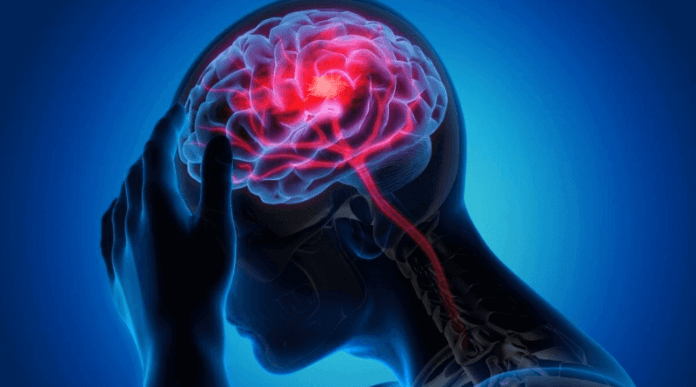Welcome to our comprehensive guide on understanding ataxia! Whether you’re a healthcare professional, someone living with ataxia, or simply curious about this neurological condition, we’ve got you covered. In this blog post, we’ll delve into the causes, symptoms, and treatment options for ataxia.
From shedding light on the different types of ataxia to exploring the latest advancements in its management, we aim to provide valuable insights that will help increase awareness and foster a better understanding of this complex disorder. So, let’s embark on this enlightening journey together as we unravel the mysteries surrounding ataxia!
What is Ataxia?
Ataxia is a neurological disorder that affects the coordination and balance of voluntary muscle movements. It stems from damage to the cerebellum, which is responsible for controlling fine motor skills and maintaining equilibrium in the body. This impairment can result in jerky or unsteady movements, making it challenging for individuals with ataxia to walk, talk, or perform everyday tasks.
There are several types of ataxia, each with its own unique characteristics and underlying causes. These include hereditary ataxias such as Friedreich’s ataxia and spinocerebellar ataxias (SCAs), acquired ataxias caused by factors like head trauma or stroke, and idiopathic late-onset cerebellar degeneration (ILOCA).
The symptoms of ataxia can vary depending on the type and severity of the condition. Common signs may include poor coordination, slurred speech, tremors or shaking movements, difficulty swallowing or performing precise hand movements.
While there is currently no cure for most forms of progressive ataxias, various treatment options aim to manage symptoms and improve quality of life. Rehabilitation therapies such as physical therapy can help improve balance and coordination skills. Assistive devices like braces or walkers may also be prescribed to enhance mobility.
In addition to these conventional approaches, ongoing research into potential treatments offers hope for future advancements in managing this complex condition. With greater understanding comes improved support systems for individuals living with ataxia – empowering them to lead fulfilling lives despite their challenges.

Types of Ataxia
Ataxia is not a single disorder, but rather a term used to describe a group of neurological conditions that affect coordination and balance. There are several types of ataxia, each with its own distinct characteristics.
One common type is hereditary ataxia, which is caused by genetic mutations passed down from parents. This form often begins in childhood or adolescence and progresses slowly over time. Another type is acquired ataxia, which can result from various factors such as head trauma, stroke, or certain diseases like multiple sclerosis.
Spinocerebellar ataxias (SCAs) are another subgroup within the spectrum of ataxic disorders. These are usually inherited and cause degeneration in specific parts of the cerebellum – the area responsible for coordinating movement.
Friedreich’s ataxia is yet another subtype, characterized by progressive muscle weakness and loss of coordination. It typically appears during childhood or adolescence and may also involve heart problems.
Episodic ataxias refer to forms where symptoms come and go episodically instead of being constant. They can be triggered by factors like stress or physical exertion.
There are many other less common types of ataxias as well, each presenting unique challenges for those affected.
Understanding the different types of ataxia is crucial because it helps guide diagnosis and treatment options tailored specifically to each individual’s needs. By recognizing the specific subtype someone has, healthcare professionals can provide appropriate support services and interventions to improve their quality of life.
Causes of Ataxia
Ataxia is a neurological disorder that can be caused by various factors. One of the primary causes is hereditary or genetic mutations. These mutations can affect the genes responsible for controlling muscle movement and coordination, leading to ataxia.
Another common cause of ataxia is damage to the cerebellum, which is the part of the brain that regulates motor control. This damage can occur due to conditions such as stroke, traumatic brain injury, or multiple sclerosis.
Certain infections, such as viral encephalitis or bacterial meningitis, can also lead to ataxia. These infections can cause inflammation in the brain and disrupt normal neurological function.
In some cases, ataxia may be a side effect of certain medications or toxins. Alcohol abuse and exposure to certain chemicals or heavy metals like lead or mercury are known to increase the risk of developing ataxia.
Furthermore, there are rare forms of acquired ataxias caused by autoimmune disorders where the immune system mistakenly attacks healthy cells in the nervous system.
Understanding these potential causes is crucial in diagnosing and managing ataxia effectively. Medical professionals play a vital role in identifying the underlying cause through thorough evaluations and diagnostic tests.
Symptoms of Ataxia
Symptoms of Ataxia can vary depending on the type and severity of the condition. One common symptom is difficulty with coordination and balance. People with ataxia may have trouble walking in a straight line, maintaining their balance, or performing fine motor tasks such as writing or buttoning a shirt.
Another symptom is slurred speech or changes in voice quality. This can make it difficult for individuals to communicate effectively. In some cases, swallowing difficulties may also occur.
Ataxia can also cause muscle weakness and tremors. These involuntary movements can affect different parts of the body and interfere with daily activities.
Other symptoms may include vision problems, such as double vision or blurred vision, as well as hearing loss and problems with sensation in the limbs.
It’s important to note that these symptoms can worsen over time and may lead to significant disability if left untreated. If you experience any of these symptoms or suspect you may have ataxia, it’s crucial to consult a healthcare professional for proper diagnosis and treatment options tailored to your specific needs.

Treating Ataxia
Treating Ataxia requires a comprehensive approach that addresses the underlying causes and manages the symptoms. While there is no cure for Ataxia, various treatment options can help improve quality of life and slow down disease progression.
One important aspect of treating Ataxia is managing any existing medical conditions that may contribute to its development or exacerbate symptoms. For example, if Ataxia is caused by a certain medication or vitamin deficiency, adjusting medications or providing appropriate supplements can be beneficial.
Physical therapy plays a crucial role in managing Ataxia as it focuses on improving balance, coordination, and mobility. This therapy involves exercises designed to strengthen muscles and improve posture. Occupational therapy can also be helpful in teaching patients how to adapt their daily activities to accommodate their limitations.
In some cases, assistive devices such as walkers or braces may be recommended to enhance mobility and reduce falls. Speech therapy may also be needed when speech difficulties arise due to muscle weakness.
Additionally, medications may be prescribed to manage specific symptoms associated with Ataxia, such as tremors or muscle stiffness. However, it’s important to note that medication effectiveness can vary between individuals.
Staying socially engaged and seeking support from healthcare professionals specializing in neurological disorders can provide emotional support and valuable resources for coping with the challenges of living with this condition.
Remember that each person’s experience with Ataxia is unique; therefore, treatment plans should always be tailored according to individual needs under the guidance of medical professionals familiar with this disorder.
Conclusion
Understanding Ataxia is crucial for individuals and their loved ones who may be affected by this neurological condition. By knowing the causes, symptoms, and treatment options available, one can better navigate through the challenges posed by Ataxia.
Ataxia is a complex disorder with various types that can affect different parts of the body. It is often caused by genetic abnormalities or damage to the nervous system. The symptoms of Ataxia can vary widely from person to person but generally include problems with coordination, balance, speech difficulties, and muscle weakness.
While there is no cure for Ataxia at present, there are several treatment options available that aim to manage its symptoms and improve quality of life. Physical therapy can help individuals maintain mobility and strengthen muscles. Occupational therapy can assist in adapting daily activities to accommodate limitations caused by Ataxia. Speech therapy may also be beneficial for those experiencing speech difficulties.
Additionally, medication may be prescribed to alleviate specific symptoms such as tremors or muscle spasms associated with Ataxia. In some cases, surgery or other surgical interventions may be considered as a last resort when all other treatments have been exhausted.
It’s important to note that each individual’s experience with Ataxia will differ greatly based on factors such as the type and severity of the condition. Therefore, it is essential for patients to work closely with healthcare professionals specializing in neurology who can provide personalized care plans tailored specifically to their needs.
In conclusion, Understanding Ataxia: Causes Symptoms and Treatment Options, a famous neurologist in India, understanding this condition plays a vital role in facilitating early diagnosis and intervention strategies which are essential for managing its impact on daily life effectively.
